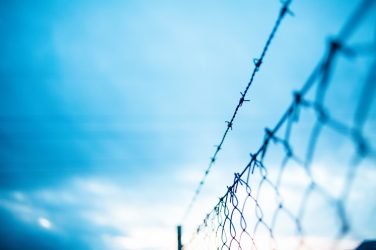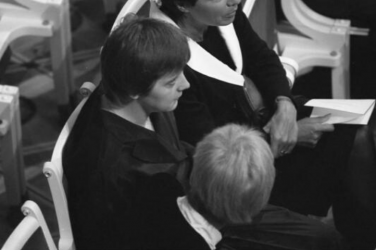Too many children live with smoking parents or carers and as such are daily exposed to the detrimental effects of tobacco. While to date, the law tends to prioritise the right of the parents to smoke freely in private areas, this tendency is slightly evolving towards a more child-friendly approach.
Because of their vulnerability, exposing children to secondhand smoke (SHS) is particularly detrimental to their health. If you smoke around children, you could threaten their health much more than you would realise. The main reason of their particular vulnerability is that their bodies and especially their lungs are still developing. According to the American Center for Disease Control and Prevention, children’ SHS exposure causes lower birth weight, acute lower respiratory infections and is responsible for the child’s death in certain cases. The Center for Disease Control also found that children who are exposed to SHS are at an increased risk of ear infections and are more likely to need ear surgery.
It is estimated that around 40% of children worldwide are exposed to tobacco smoke.
It is estimated that around 40% of children worldwide are exposed to tobacco smoke. Although SHS exposure has significantly dropped over the last 20 years, mainly due to the progressive smoking ban in public areas, children are still more heavily exposed than adults. This is explained by the fact that the home is the place where children are most exposed to SHS. Most of the time, children don’t have a say on what is happening in their home; caregivers do. In addition, there is a general misconception among smoking parents as to what exactly exposure is and the effects it entails. Smoking parents generally consider that outdoor smoking or smoking in another room inhibit adverse effects of SHS on children. This is not the case! As such as smoking in a hall or stairwell or with an opened window. Smoke goes under doors, windows and through cracks.
Yet, children’s human rights actually play a crucial role in the tobacco control discussion and could be used as an argument for children to claim the right to live in a smoke-free home. Indeed, the Convention on the Rights of the Child (CRC) obliges countries’ parties to promote and protect the life, the health and the development of the child. Accordingly, countries have the legal obligation to protect children against the adverse effects of tobacco, including SHS.
Unfortunately, those human rights are often left out of the equation and a child-right approach is missing when it comes to tobacco policymaking. To date, no country has yet adopted a general ban on smoking in households in the presence of minors. This absence of legislation can be explained by different factors. First of all, one may question the feasibility of such measure. How can such a ban be implemented in practice? How would the country be able to control what is happening inside the households without breaching the right to privacy? Indeed, while children’s rights are quite comprehensive, they actually clash with the right to privacy and family of the caregivers.
If the country was to ban smoking in the households, it would have to do so in respecting the limitations to the right to privacy
The right to privacy and family is enshrined in various international human rights instruments. It protects individuals against arbitrary and unlawful interference with their privacy. This protection extends to the home setting of the right holder. As such, if the country was to ban smoking in households, it would have to do so in respecting the limitations to the right to privacy set in international instruments.

Some countries have however started to somehow interfere with caregivers’ privacy by adopting a ban on smoking in a car with a child as a passenger. Italy, Greece, Cyprus, the United Kingdom, Ireland, and France have all adopted their respective law prohibiting smoking inside a vehicle in the presence of a child. In Belgium, since 18 August 2019, smoking while driving with a child under 16 is illegal. The ban applies to all type of vehicles to the exception of cars equipped with a sunroof, given that the roof is fully opened. If properly implemented, such measure unequivocally reduces children’s exposure to SHS. It also represents a first step towards a child-right approach in the context of tobacco control. Nevertheless, more needs to be done. We cannot continue to keep exposing children, from their youngest age, to tobacco. Nowadays, dangers to SHS’s exposure are well-known and it is imperative to take measures to protect children, especially in places where they are the most exposed, like their home.
Because a general ban on smoking in households may appear coercive, stigmatising to smokers, but also complex in terms of implementation, it is paramount to consider other types of measures. For instance, the REFRESH project, in Scotland aims at protecting children from SHS exposure at home while at the same time respecting the privacy of caregivers. It works by going into the homes, measuring the air quality, educating the caregivers on how smoking in the home could affect the children’s health, and proposing tailored solutions to eliminating or reducing children’s exposure to SHS.
While it remains unclear how to strike a fair balance between the right of the child and the right of the caretaker, there is a clear lack of legal discussion and governmental action to protect children from SHS exposure. Because of the indivisible nature human rights have, there is no right that is of greater importance than the other. It is up to the countries’ discretion. Children’s health is too important; hence we should not turn a blind eye on this serious issue. It is imperative to start regulating, whether by adopting a complete smoking ban as certain countries have, regarding smoking inside cars, or a softer measure such as informing of the risks and encouraging carers to create smoke-free homes.
Cover image: Dimitri Bong on Unsplash





